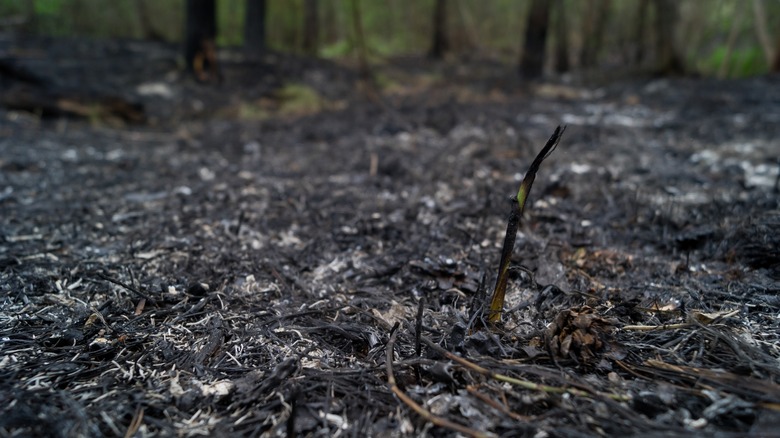The devastation wildfires can cause is outright drastic. While a certain amount of fire can be beneficial to the land and overall ecosystem, too much of it is extremely harmful, especially when flames spread to residential areas.
If you are recovering from a small or large-scale fire and have trees that were burned, there are crucial steps you need to take to help them survive. A tree’s recovery potential depends on a wide range of factors, including the overall damage from the fire, the type of tree, how long the fire burned, and if your tree has been severely dehydrated for a prolonged period. If there are fresh buds on the branches or you see green growth on the trunk, your tree has a good chance of recovering. The growing part of the trunk is called cambium and can be found underneath the bark -– if healthy, it will be fresh and green.
Once you determine if your tree can survive, there are several steps you will want to take to improve its vitality, including hydrating your tree. After a fire, the scorched soil is often extremely dry and will need extensive watering to support your tree’s survival.
Provide water and nutrients for your struggling tree

Deeply soak your tree and water the ground under the canopy slowly at a depth of 12 to 15 inches — repeat this about once a week or when the soil dries to 6 inches deep.
One problem you might run into is after a fire soil can become water-repellant and will not absorb any applied moisture. A sign of this is if water is beading on top of the dirt instead of naturally sinking into the ground. If this is the case, you can scrape or rake and remove the top 2 inches of dirt that’s not allowing water to pass and add a layer of straw, which should help with absorption.
Add a slow-release fertilizer to the soil to aid recovery. The fire likely burned away much-needed nutrients and organic matter. Adding these components to the soil will be crucial for your tree as it heals. Your local garden store or tree farm can help you assess what type of fertilizer is needed for your tree species.
Wrap tree for added protection while it recovers

As for protecting the tree from more damage, you might want to consider a wrap. Fire-damaged trees are more vulnerable to sunscalding, which is when there’s too much direct sunlight on the trunk, and the bark is not thick enough to protect the tree -– this can lead to damage, disease, and even tree death.
To support the bark as it recovers, use tree wraps, cloth, or cardboard to cover the trunk and large limbs. These protections can be kept in place for a year if needed. In some cases, aluminum foil can be used to protect your trees from sunscald. Be mindful to loosen the material every couple of months to avoid strangling the tree. Before wrapping, remove any dead branches that could attract pests and pathogens.
Lastly, for overall prevention, keep fire season in mind while planning your landscaping. Consider including some of the best plants to have in your yard if you live in a fire-prone region. Focus on helping trees survive fire season by removing low-hanging limbs. This can help prevent flames from traveling up the tree during a fire. Keep grass and shrubs short and tidy to keep fire from spreading quickly, and opt for fire-tolerant plant species when possible. This extra planning and yard work will help protect your trees from fire damage.



